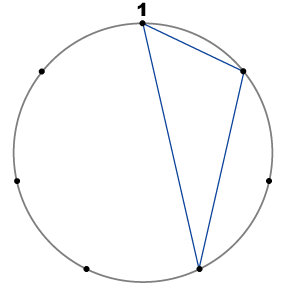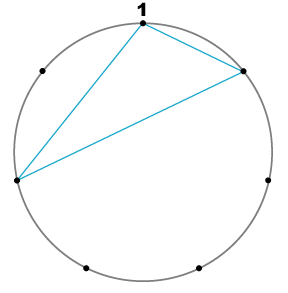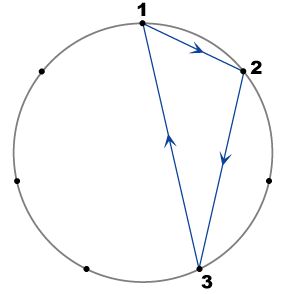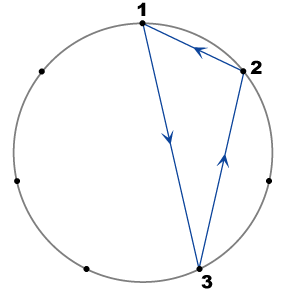 |
 |
 |
 |
 |
 |
Proceeding with the development of Figure 2a via rotations of the triangle through successive increments of 2π/7, and (arbitrarily) assigning further imaginary units to the new vertices generated gives Figure 3 (with different colors for different triads). Following each triangle around shows that the diagram represents the octonion representation with triads:
|
 |
 |
 |
 |
 |
|
Triads: (e1,e2,e3) (e1,e4,e5) (e1,e6,e7) (e2,e4,e6) (e2,e7,e5) (e3,e4,e7) (e3,e5,e6) with distinguished triad (e1,e2,e3) |
 |